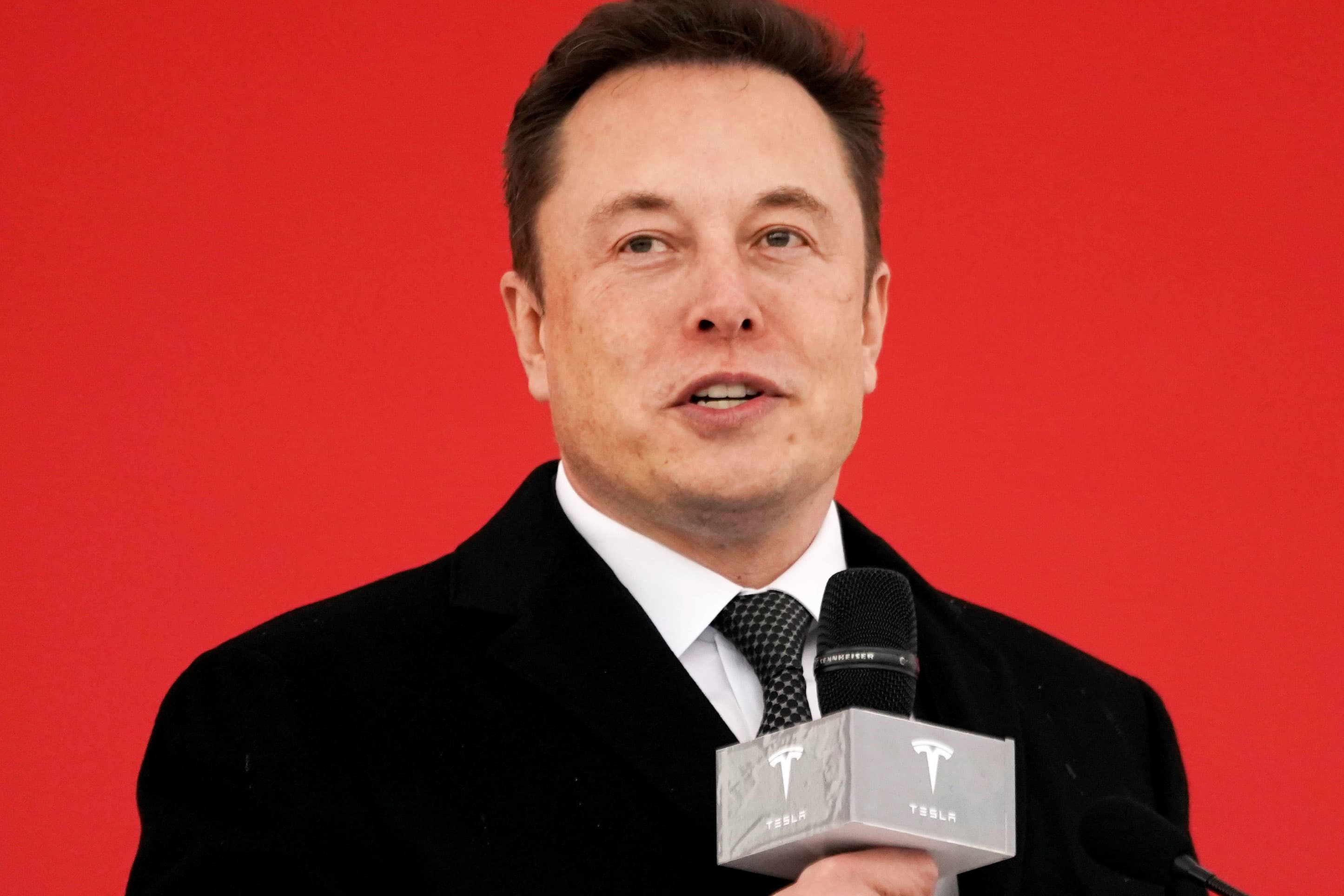Tesla CEO Elon Musk attends the Tesla Shanghai Gigafactory groundbreaking ceremony in Shanghai, China, January 7, 2019.
Aly Song | Reuters
Elon Musk’s electric car and renewable energy company, Tesla, reports third-quarter results after the bell on Wednesday.
Here’s what Wall Street analysts are expecting, per an average of analyst estimates compiled by Refinitiv:
- Earnings per share (adjusted): 57 cents
- Revenue: $8.36 billion
The company already reported that it delivered 139,300 vehicles during the quarter, a new record for Tesla.
At Tesla’s 2020 annual shareholder meeting and battery day presentation in September, CEO and co-founder Elon Musk said that vehicle deliveries in 2020 would be up 30% to 40% from last year, implying a range from 477,750 to 514,500 deliveries total. (Earlier, the company said it would comfortably exceed deliveries of 500,000 this year, but it reined in expectations slightly as the Covid-19 pandemic began to impact Tesla operations and auto sales.)
Tesla completed a five-for-one stock split during the quarter. When a company splits its stock, its total value doesn’t change, but it helps get smaller investors to buy shares.
Ahead of the earnings call on Wednesday, institutional and retail investors submitted questions to a site called Say.com that Tesla uses to pick questions for executives to answer during the Q&A portion of its calls.
Among other things, institutional investors sought information about just how much Tesla plans to spend on new factories over the next decade. They were also curious about Tesla’s pricing and margin targets, after the company recently cut prices on its vehicles including in the U.S. and China. Tesla is currently building new factories in Austin, Texas, and Brandenburg, Germany (outside of Berlin).
In September, Musk and Senior Vice President of Energy Engineering, Drew Baglino also unveiled a new battery cell that the company designed itself, and plans to produce on their own, starting on pilot lines in Fremont, California, then at their other factories.
Institutional and retail investors also wanted to know when Tesla will roll out vehicles, and energy storage products, that include the new battery cells. They also had questions about when Tesla’s vehicles will be capable of functioning as driverless robotaxis, and when Tesla will offer its own ride-hailing service.
Today, Tesla offers its customers what it markets as a Full Self-Driving or “FSD” option, which it sells for $8,000. The FSD package is Tesla’s most advanced driver assistance system, but it is not a fully autonomous one. Tesla recognizes a portion of revenue from FSD sales with each new feature update that moves it closer to what the company defines as driverless capability.
Musk has previously said a Tesla vehicle with FSD should be able to drive itself coast to coast, or from a Tesla facility to a customer’s home, in lieu of a traditional delivery arrangement. It’s been about four years since the CEO promised a driverless vehicle was on the way.
During the third quarter, however, he said that Tesla was rewriting its semi-autonomous system:
In October, he promised a beta software update for select drivers who purchased the company’s Full Self-Driving option. Tuesday after markets closed, Musk wrote the rollout would begin slowly rolling out overnight.
Retail investors, many of whom are enthusiastic Tesla owners themselves, want executives to say whether Tesla will let customers transfer their FSD software to their next vehicle, with or without a transfer fee, much the way that gaming or mobile companies let customers transfer games and apps when they upgrade to newer hardware.
This is breaking news. Please check back for updates.
